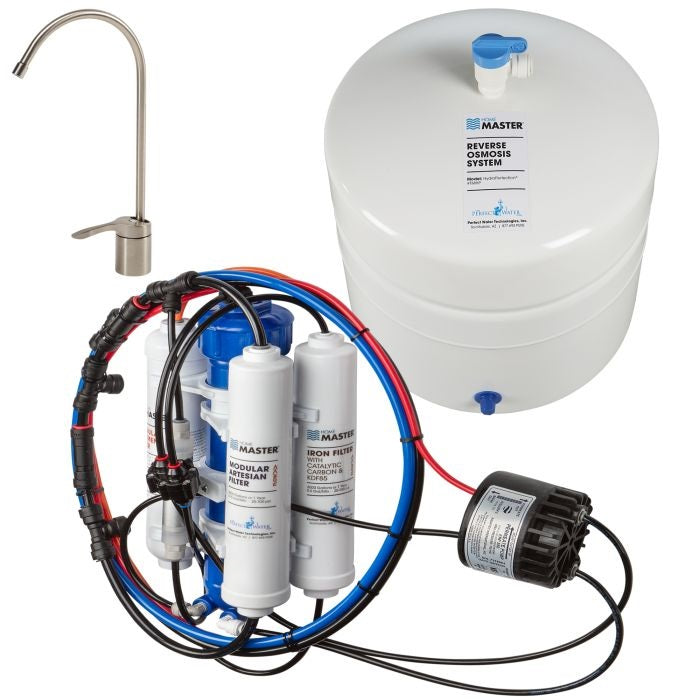Just like Waterdrop, we’ve seen an increase in questions regarding it and how our Vitev REMIN (or MAXX RO) compare. You can only glean so much from their website and there were a few things that stood out immediately to us, but there was only one way to know for sure.
So we grabbed a pack and cut one open.
Website Info
Before we show you what’s inside, here’s what we noticed on the website. First, they don’t have much in the way of information regarding what’s inside. The only thing we could find was one line we’ve highlighted below.

No mention of what minerals it includes, but they do specify it also includes “coconut shell granular activated carbon”. Doesn’t say how much, just that there is. That’s concerning, because it will require a significant amount of carbon to eliminate any tastes and odors from the tank for the 12 month lifespan.
The 2nd concerning item was this.

We’ve worked with reminerlizing RO water for over a decade and this isn’t how it works. When you run RO water through minerals, you get a large change initially. Going through the minerals for a 2nd pass does NOT increase TDS, pH, ORP or anything else for that matter anywhere close to the same factor. So when they simply double the expected levels of Calcium and Magnesium, something is sketchy.
What’s inside?
You can view the entire video, but a simple pic will also get the point across. What you see below are the entire contents of the filter. The filter itself is only 10” x 2”, so there isn’t a lot of volume to fill, but this small 8oz tumbler had no problems holding the entire contents.

To make matters worse, that mineral looks very much like calcite. Calcite is a cheap version of calcium developed for municipal and commercial applications where acidic water can erode pipes and infrastructure. It dissolves quickly and therefore can keep up with high flow rates found in large volumes of water.
It’s not a recommended form for consumption and isn’t what you find in supplements, ground water, etc.
Which means this “artesian” mineral filter is really just a carbon filter with a bit of cheap calcium tossed in at the end.



